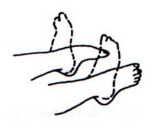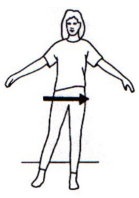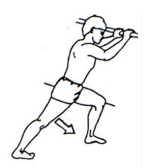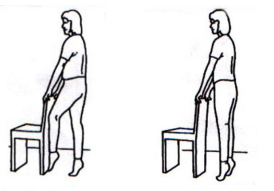What is an ankle sprain including minor avulsion/flake fracture?
A sprain is a soft tissue injury to a ligament. Ligaments are strong tissues around joints which connect bones to other bones and provide support to the joints. A ligament can be stretched during a sudden pull. This may partly tear some of the fibres in the ligament. Occasionally a ligament may fully tear (rupture). As part of this you may also have had an “avulsion fracture” (chipped a small piece of bone).
A damaged ligament causes inflammation, swelling and bleeding (bruising) around the affected joint. Movement of the joint is painful. The aims of treatment are to keep inflammation, pain and swelling to a minimum and to be able to use the joint normally again as quickly as possible.
How long will it take to recover?
The initial pain usually settles after a few days and during this time it is important to follow the simple treatment advice in this leaflet to ensure a good recovery. These injuries usually heal fully without any long -term problems.
The soft tissues (muscles and ligaments) normally take around six weeks to heal, this timeframe may vary as everyone recovers from injuries at different rates. The pain, bruising, tenderness and swelling you are experiencing should gradually settle over a period of several weeks.
During this time, you may find walking on the foot uncomfortable; it is advisable to rest and keep the foot elevated as much as possible especially in the first 2 weeks. Elevation helps to reduce swelling and decreases pain.
You are more likely to sprain your ankle if you have sprained it before. Be careful on uneven surfaces, going up and down stairs, and walking in shoes that are not supportive.
Treatment of a sprain
You may be provided with support for the ankle in the form of a bandage or removable boot, depending on the type of injury. If required, you will also be provided with crutches.
Early weight bearing (ie, putting weight on your injured foot) has been shown to help your ankle to heal more quickly. Because of this most people with an acute ankle sprain will not be given crutches, but we will assess each patient individually. Always try to walk normally ie, your heel strikes the floor first, rock forward on your foot, and then push off with your toes.
- Rest the affected joint for 48 hours after the injury. This will prevent further injury and allow the healing process to begin.
- Ice should be applied as soon as possible after the injury to ease the pain, swelling and bruising. This can be done by wrapping a packet of frozen vegetables (peas) or crushed ice in a wet tea towel or pillowcase to prevent ice burn. Gently press the ice pack onto the injured ankle for about 20 minutes every 2 hours, while awake.
- To reduce swelling, always elevate the injured limb above the level of your hips. This should preferably be across the settee, with your leg propped up on a pillow or cushion.
- If you have been given a bandage this can be removed after 2-3 days.
- If you have been fitted with a boot this should gradually be discarded over the next 3-6 weeks as you return to your own supportive footwear such as trainers or walking boots.
- You can gradually build up walking on your foot as much as the pain allows.
- You can take simple painkillers, such as Paracetamol, as advised. Please read the dosage instructions on the package carefully. If you are unsure of which pain killers to take you can contact your GP practice for advice.
- Most injuries heal without any problems. However, it may take several moths for your symptoms to settle completely, especially swelling towards the end of the day.
- If you are still experiencing significant symptoms after 6 weeks, please contact the Fracture Clinic 0151 604 7069 (Monday to Friday, 8.30am until 3.30pm).
Exercises to reduce stiffness and increase movement
In the first 48 hours after injury:
Gently move your ankle up and down.
Repeat each movement 5-10 times.

After 48 hours:
Continue exercises above trying to increase movement in all directions. Compare the movement to the other ankle. Try to walk as normally as possible.
Balance:
Your ankle helps you to balance. Once it is injured, it is weakened and liable to re-injury unless the balance mechanism in strengthened.
Once you are able to take weight on the leg, try balancing on the affected leg and increase this gradually until you can stand for 30 seconds at a time (hold onto something for balance).

Stand in a walking position with the leg to be stretched straight behind you and the other leg bent in front of you. Take support from a wall or chair. Lean your body forwards until you feel the stretching in the calf of the straight leg. Hold approximately 30 seconds – relax.
Repeat 3 times.

At about 2 weeks:
With equal weight on both feet, push up onto your toes and down again.
Repeat 10 times.
When you can do this comfortably, try pushing up on your toes on one leg at a time. Repeat 10 times on each leg.

NB. These exercises should not increase your pain. Perform each exercise gently and slowly, only moving as far as feels comfortable. Practice each exercise up to 10 times, 2-3 times a day. If you feel the exercises are making your pain worse stop doing them and seek advice.
Please contact your GP or NHS 111 for any queries or concerns.